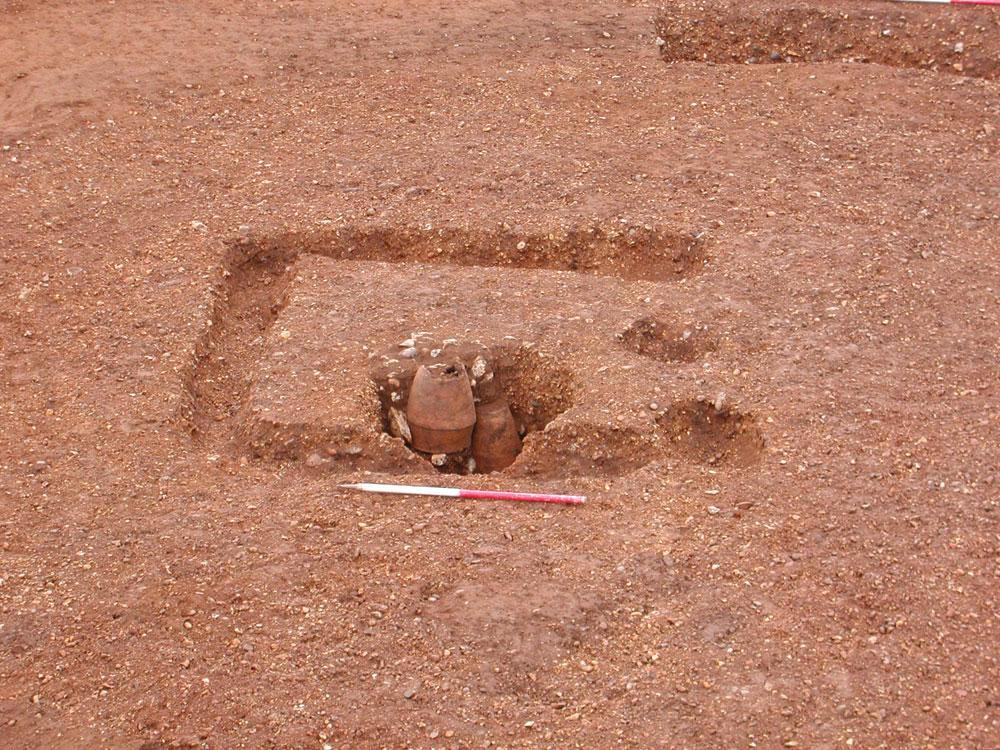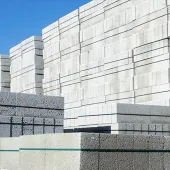Pleistocene To Modern Archaeology At Flixton Park Quarry

By Stuart Boulter, field projects team, Archaeological Service, Environment & Transport Dept., Suffolk County Council
The last 11 years of expansion at Cemex’s quarry at Flixton Park in the Waveney Valley, Suffolk, have given Suffolk County Council’s Archaeological Service the opportunity to record the archaeology over a significant area of the landscape.
The earliest evidence for human activity (in the form of several flint hand axes) was recovered from the mineral deposit itself. While the precise date of the gravel terraces is still being debated, it is clear that Anglian outwash gravels overlie a significantly different sequence that may relate to the earlier Bytham River complex (see QM, Nov 2006). This being the case, the flint artefacts recovered from the upper levels could be contemporary or reworked from the earlier layers. The variable character and condition of the artefacts suggests that both may be true.
A remarkable range of archaeological periods and feature types was also represented in the surface archaeology with significant evidence from the Neolithic, Bronze Age, Iron Age, Roman, early Anglo Saxon and post-medieval periods.
A number of structural features were identified that appear to be unique to Flixton as parallels have not been identified elsewhere. The earliest of these was a 20m diameter post-hole circle dating to the later Neolithic period (c.3200–2000 BC). Similar timber circle monuments are often astronomically aligned and this possibility is being explored for a forthcoming publication.
During the early Bronze Age (c.2000–1500 BC) the landscape became dominated by funerary monuments with a series of inhumation and cremation burials associated with barrows and their encircling ring ditches (fig. 1). These features clearly remained visible in the landscape for several hundred years as the ditch around one barrow was used to dispose of rubbish during the early Roman period and later became the focus for early Anglo Saxon burials
(c.6th century AD).
While there was some evidence for occupation during the Bronze Age, the late Iron Age and earlier Roman periods (c.1st century BC to 3rd century AD) provided more significant structural evidence with aisled buildings, probably barns (fig. 2), two pottery kilns, a multiple stacked burial (fig. 3) and two enigmatic structures; a large post-hole circle and a rectangular post-built structure with three lines of internal post holes.
In addition to the early Anglo Saxon cemetery, an area of contemporary occupation was also recorded with its characteristic sunken-featured buildings and rectangular post-holed halls.
The later Saxon and medieval periods are not well represented, but the line of the earlier road running between Flixton and the neighbouring village of Homersfield was identified with its rutted metalled surface and flanking ditches. This road was abandoned around 1880 and moved northwards to its present location in order to make it invisible to the occupants of Flixton Hall.
Post-medieval evidence relating to Flixton Hall and its surrounding park included ditches, tree plantings and the crushed-brick footings for a folly within a square ditched enclosure. In addition, the foundations for an 18th century barn were recorded.
Finally, one of the most unexpected phases of activity related to the First World War, with an extensive series of trenches, dugouts and latrine pits recorded. The soldiers, or at least the officers, were clearly well looked after as wine, brandy and beer bottles were common, although the presence of large quantities of sardine tins and marmalade jars did suggest that some of the fare was less exotic.








